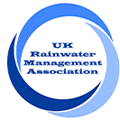Communal Rainwater Harvesting
Communal Rainwater Harvesting is the process of capturing and reusing rainwater for use as an alternative water supply in multiple residential properties. Recycled rainwater can be used to cover many non-potable applications within typical homes, including toilet flushing, irrigation, and car washing.
Communal systems are commonly regarded as the best solution for implementing rainwater harvesting in residential homes. By utilising communal systems rather than individual plot systems, homeowners are relieved of maintenance duties, and the risk of cross-contamination with the public water supply can be mitigated by removing internal components from homes. Discover more below.









